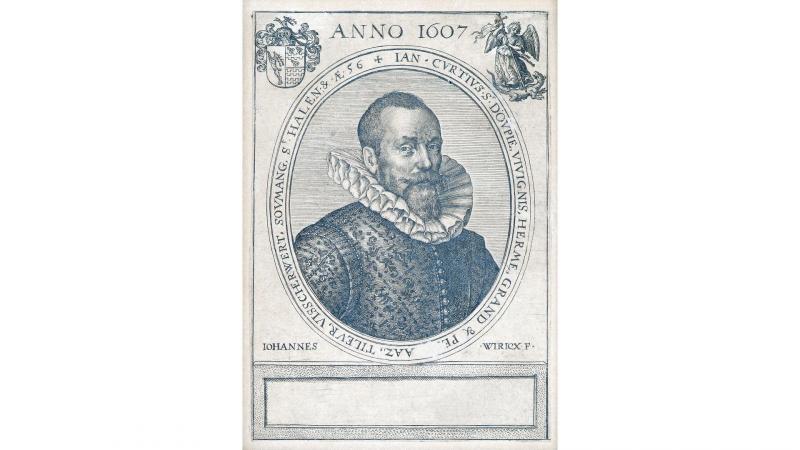Produced in 1607 by Jean Wiricx (c. 1549–c. 1618), this remarkable portrait is the only known effigy of Jean Curtius (Liège 1551–Leganez 1628). He is represented as a bust covered with luxurious clothing, in a classical style for the period. The legend includes all his titles and indicates his age (56). Both sides of the medallion depict the arms of the Corte family (the name is Latinised according to the customs of the time as Curtius) and an effigy of Saint Michael that recalls the sign of his old institutions.
Jean Curtius was a rich merchant, a bourgeois from Liège but whose family was of Brabant origin. With his wife Pétronille de Braaz, he would have four children, all sons. He is also the one whose considerable fortune – like a "Liège Croesus" – is behind the remarkable buildings which today house most of the museum which bears his name. They are the most obvious sign of his financial and social success. He acquired the land for 3,000 florins in 1595, with work beginning in 1597 and being completed in 1605. They would have cost 140,000 florins! The chimneys that are still in place on the ground floor and the first floor bear the dates 1603 and 1604 respectively.
After making a fortune in his country, mainly through the trading of weapons and gunpowder, Curtius turned his attention to Spain at the end of his life (1617), in order to develop new companies in the metallurgy sector there over ten years. He passed away on 13 July 1628. His body was returned to Liège to rest with his wife, who died in 1603, in the Hocheporte Capuchin convent, of which he was the principal patron.
